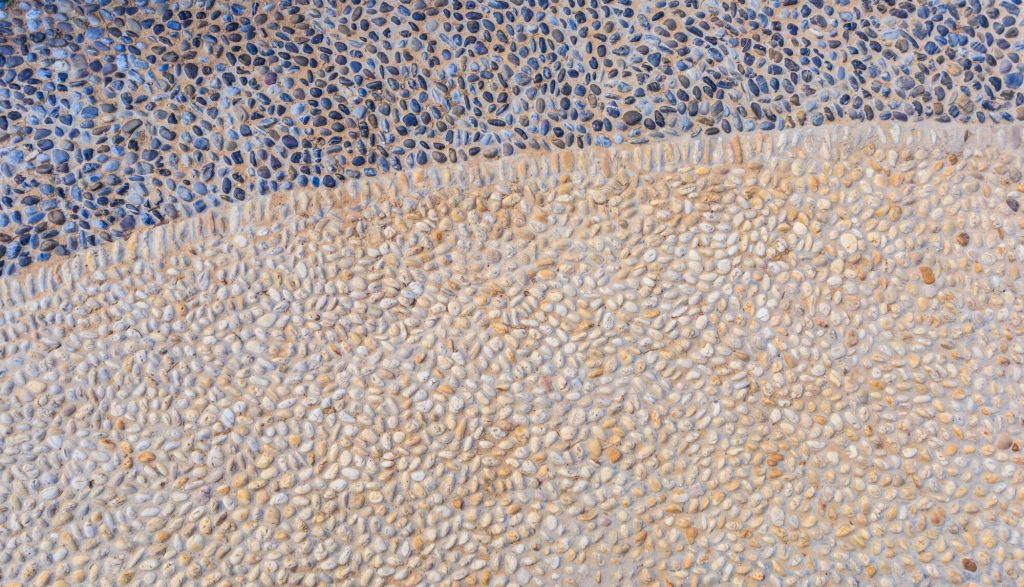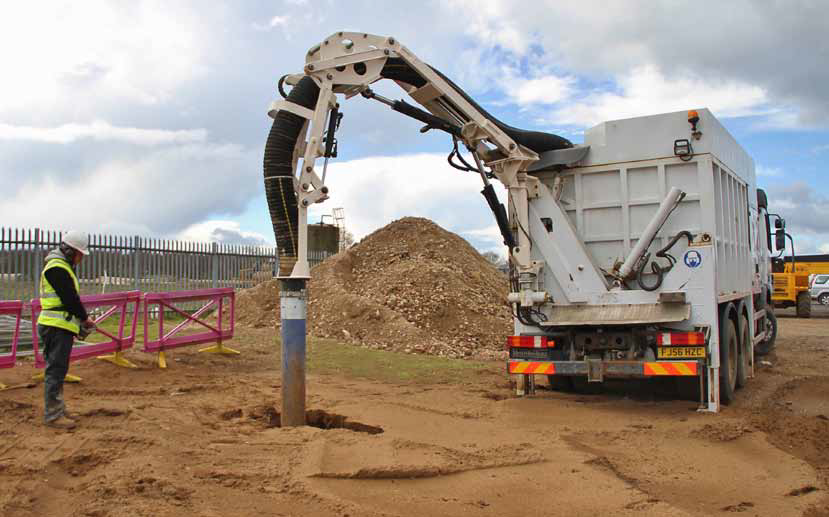In the quest for sustainable urban development, porous paving has emerged as a game-changer. It’s a solution that marries functionality with environmental stewardship.
Porous paving, also known as permeable paving, allows water to seep through its surface. This unique feature reduces runoff, a common issue with traditional non-permeable surfaces.
But the benefits of porous paving extend beyond just water management. It’s a durable, cost-effective alternative that can be used in various applications, from driveways to parking lots.
In this article, we delve into the many advantages of porous paving. We’ll explore its role in stormwater management, its contribution to sustainable infrastructure, and its practical applications.
Whether you’re a homeowner, an urban planner, or a construction professional, you’ll find valuable insights into why porous paving is a smart choice for our cities and our planet.

Understanding Porous Paving
Porous paving is a type of surface that allows water to pass through it. This permeability is achieved through a special design that leaves small gaps or “pores” in the material.
What is Porous Paving?
Porous paving is a revolutionary approach to paving that addresses some of the environmental challenges posed by traditional surfaces. Unlike conventional paving, porous paving is designed to allow water to permeate through its surface, mimicking the natural land absorption process.
This permeability reduces the amount of runoff during heavy rainfall, helping to manage stormwater more effectively. It’s a simple concept, but one that has far-reaching implications for sustainable urban development.
The Different Types of Porous Paving Materials
There are several types of porous paving materials available, each with its unique properties and applications. The choice of material depends on the specific needs of the project, including load-bearing requirements, aesthetic preferences, and budget.
- Porous asphalt is a popular choice for parking lots and driveways. It’s durable, cost-effective, and can withstand heavy loads.
- Pervious concrete, another common option, is ideal for sidewalks and other pedestrian areas. It offers a balance of strength and permeability.
- Plastic grids, filled with gravel or grass, are a versatile solution. They’re often used in multi-use spaces and areas where aesthetics are a priority.
Environmental Advantages of Porous Paving
Porous paving offers several environmental benefits, making it a preferred choice for sustainable infrastructure. Its permeability plays a crucial role in managing stormwater, reducing the risk of flooding, and promoting groundwater recharge.

Stormwater Management and Flood Mitigation
One of the key benefits of porous paving is its ability to manage stormwater effectively. By allowing water to seep through its surface, it reduces the volume of runoff that can overwhelm drainage systems during heavy rainfall. This not only helps to prevent flooding but also reduces the strain on municipal stormwater infrastructure.
Moreover, by mimicking the natural land absorption process, porous paving can help to maintain the balance of local ecosystems. This is particularly important in urban areas, where the proliferation of impermeable surfaces has disrupted natural water cycles.
Groundwater Recharge and Water Conservation
Porous paving also contributes to groundwater recharge. The water that permeates through the surface can seep down to replenish underground aquifers, a critical source of fresh water. This is particularly beneficial in areas prone to drought or water scarcity.
In addition, by reducing the need for irrigation, porous paving can contribute to water conservation. This is especially relevant in landscaped areas, where porous paving can be combined with native, drought-tolerant plants to create a low-impact, water-efficient environment.
Pollution Reduction and Improved Water Quality
Porous paving can also help to improve water quality. As water seeps through the surface, it is filtered by the underlying layers of soil and gravel. This process can remove pollutants from the water, preventing them from entering the groundwater or being carried into local waterways.
Furthermore, by reducing the volume of runoff, porous paving can help to prevent the erosion of stream banks and the sedimentation of water bodies. This not only protects local ecosystems but also contributes to the health and beauty of our rivers and lakes.
Practical Benefits for Urban Planning
Beyond environmental advantages, porous paving offers practical benefits for urban planning. It is a versatile solution that can be adapted to various applications, from parking lots and driveways to sidewalks and plazas.
Durability and Load-Bearing Capacity
Despite common misconceptions, porous paving is highly durable. When properly installed and maintained, it can last as long as traditional paving. It can also support heavy loads, making it suitable for a wide range of applications.
Moreover, porous paving is resistant to cracking and buckling caused by freeze-thaw cycles. This is because the permeable surface allows water to drain away, reducing the risk of ice formation and subsequent damage.
Cost-Effectiveness and Infrastructure Savings
Porous paving can also be cost-effective in the long run. While the upfront costs may be higher than traditional paving, the savings in stormwater management infrastructure can offset this. By reducing the need for complex and expensive drainage systems, porous paving can lead to significant cost savings.
Additionally, the installation of porous paving can earn LEED credits, contributing to green building certification and potentially leading to financial incentives.
Aesthetic Appeal and Design Flexibility
Porous paving is not just practical and eco-friendly, but also aesthetically pleasing. It comes in various colors, textures, and patterns, offering a wide range of design possibilities. This makes it a popular choice for landscape architects and designers.
Furthermore, certain types of porous paving allow for the growth of grass or other vegetation, creating a green, natural-looking surface. This can enhance the overall appeal of a property, contributing to its value and attractiveness.
Porous Paving in Brisbane: A Case Study
Brisbane, a city known for its high rainfall and urban planning needs, provides an excellent case study for the use of porous paving. The city’s climate and urban landscape make it an ideal candidate for this sustainable infrastructure solution.
Addressing Brisbane’s Climate and Urban Planning Needs
Brisbane’s subtropical climate results in heavy rainfall, making effective stormwater management crucial. Porous paving offers a practical solution, helping to manage excessive rainwater and reduce the risk of flooding.
Moreover, as a rapidly growing city, Brisbane faces the challenge of balancing urban development with environmental sustainability. Porous paving aligns with the city’s commitment to green infrastructure, contributing to water-sensitive urban design (WSUD) and sustainable urban drainage systems (SUDS).
Success Stories and Local Projects
Several local projects in Brisbane have successfully utilized porous paving. For instance, a number of residential and commercial developments have incorporated permeable surfaces into their design, demonstrating the practical and aesthetic benefits of this solution.
Furthermore, Brisbane City Council has implemented porous paving in various public spaces, including parks and pedestrian areas. These projects serve as a testament to the city’s commitment to sustainable practices and the effective use of porous paving in urban planning.
Maintenance and Longevity of Porous Surfaces
While porous paving offers numerous benefits, it does require regular maintenance to ensure its longevity. This involves routine cleaning to prevent the pores from becoming clogged with debris, which can impede water permeability.
However, with proper care, porous paving can last as long as traditional paving. Its durability and resilience make it a cost-effective solution in the long run.
Regular Cleaning and Care
Regular cleaning of porous surfaces is essential to maintain their functionality. This typically involves sweeping or vacuuming to remove debris and prevent clogging.
In addition, occasional deep cleaning may be necessary to remove any accumulated sediment. This can be done using a pressure washer or a specialized vacuum sweeper designed for porous surfaces.
Misconceptions and Realities
There are some misconceptions about porous paving, particularly regarding its strength and durability. Some believe that these surfaces are not as strong as traditional paving and are prone to damage.
However, when properly installed and maintained, porous paving can support heavy loads and withstand various weather conditions. It’s a robust and reliable solution for a wide range of applications, from driveways and parking lots to pedestrian areas and public spaces.
Conclusion: The Future of Porous Paving
Porous paving is more than just a trend. It’s a forward-thinking solution that aligns with global sustainability goals. As we face the challenges of climate change and urbanization, porous paving offers a practical and effective way to manage stormwater and reduce environmental impact.
Embracing Sustainable Practices
The use of porous paving is a testament to embracing sustainable practices. It demonstrates a commitment to environmental stewardship and a proactive approach to climate change adaptation. By choosing porous paving, we can contribute to a more sustainable and resilient future.
Call to Action for Sustainable Development
As homeowners, urban planners, and construction professionals, we have the power to shape our environment. By choosing porous paving, we can make a positive impact on our communities and the planet. Let’s embrace porous paving and make our cities more sustainable, one pavement at a time.





Leave a Reply
You must be logged in to post a comment.